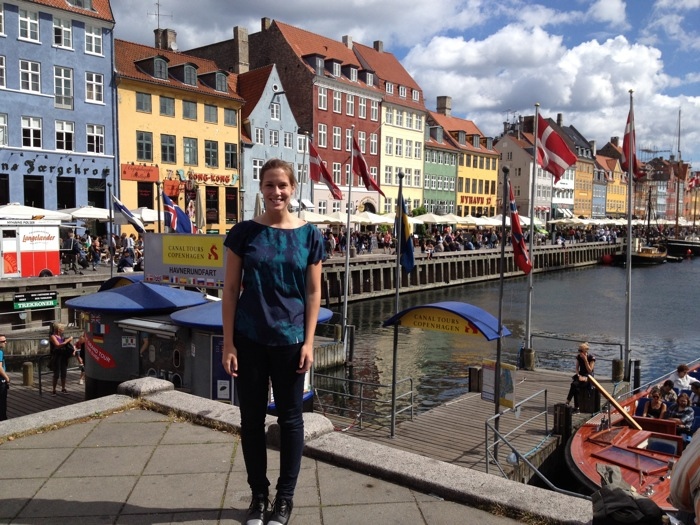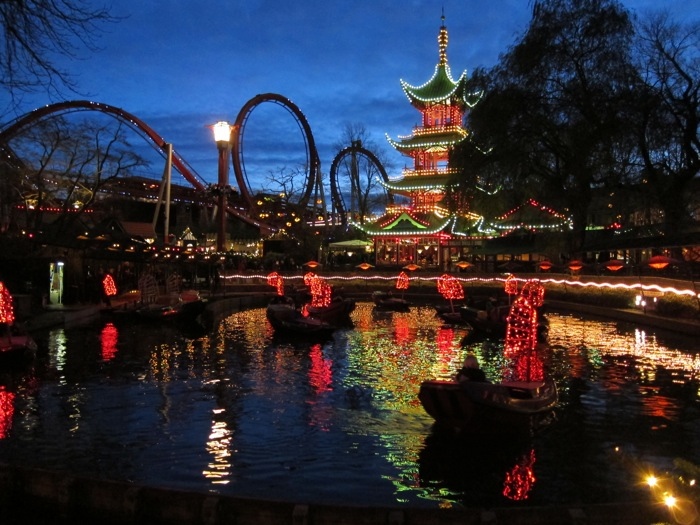As I struggle to come up with one word that can accurately encompass an incredible, life changing four months of my life, I realize that English sometimes can’t cut it.
Instead, the word that comes to mind is hygge (pronounced something like “hew-guh”). Hygge is a Danish word that doesn’t really have a cut-and-dried English translation; it instead evokes a feeling – of coziness, of cold nights spent in comfortable candle-lit rooms, of laughing with friends and sipping on a freshly pulled Carlsberg or hot coffee. During my time in the land of Hans Christian Andersen and the Vikings, I came to appreciate and desire hygge like the Danes do – at the end of a happy evening spent with friends, it is customary to thank your host for a “hyggeligt” night.
In a place that grows dark and cold early in the fall and stays that way until late in the spring, this concept of hygge is crucial to understanding why Denmark has consistently been named the world’s happiest country. Starting in early November, the streets of Copenhagen are lined with Christmas lights, garlands, and twinkling hearts. Holiday markets begin popping up around town serving hot gløgg, a Danish mulled wine, and delicious œbleskiver, something like pancake balls rolled in jam and powdered sugar. Friends sit in cozy, warm pubs late into the night, sipping on their Christmas beer and talking about their weeks, and people of all ages visit Tivoli, the amusement park that inspired Walt Disney to create his marvel, to take in the lights and music.
“After a hectic week spent hopping on and off Italian trains or getting hopelessly lost in Paris, Copenhagen felt like home in a way I never expected.”
As I spent evenings around the dinner table with my Danish host family, talking to them about my courses (such as Scandinavian cinema and Norse mythology), laughing over my host sister Victoria’s stories from her latest high school party, and playing dice games until our eyes could barely stay open, I began to grasp why it is that Danes are so content. A more cynical person might tell you it is because they have lower expectations than Americans. I, on the other hand, believe differently. If you were to ask me the secret to Danish happiness, I would tell you that it is their prioritization of time spent with family and friends over long nights at the office, of quality experiences with those you love over amassing great wealth, and the knowledge that there truly is nothing more warming than hygge on a cold night to bring a person all of the joy they could imagine.
Through the Danish Institute for Study Abroad program, I was afforded the wonderful opportunity to travel all over Europe, both with my classes and on my own. I experienced the quirky and beautiful countryside of rural Denmark, sipped wine and watched the Eiffel Tower light up from a boat on the Seine, climbed to the top of the highest hill in Florence, Italy to overlook the Duomo, overlooked a frozen and roaring waterfall in Iceland, and climbed through damp and echoing tunnels at the World War I forts of Verdun. I ate delicious pastas and flaky salmon and crunchy baguettes, sipped crisp chardonnays and hot teas, and tried without success to ignore the tempting smells of bakeries all over Europe. I caught the travel bug, and it isn’t going away – in fact, as I write this, I leave tomorrow to go back to Copenhagen for a week to visit the family and friends I made there one year ago.
As delightful as my travels were, however, it was always a relief to set foot again in the Copenhagen airport. After a hectic week spent hopping on and off Italian trains or getting hopelessly lost in Paris, Copenhagen felt like home in a way I never expected it to feel. The strange Danish language, distinct mannerisms of the people, and the sights of the city and my host town of Lyngby all became familiar and beloved. It was hard to come home to Indiana and to Granville after falling so deeply in love with Copenhagen, but one thing that made it easier was that same little Danish word that captivated me so much in Denmark – hygge. Sharing Danish Christmas recipes, telling stories about my host family to my family back home, and stirring up a hot pot of gløgg for our holiday dinner brought my two worlds a little closer together. I learned that no matter where I am, whether in a café in downtown Copenhagen or in my familiar Indianapolis kitchen, I can tell if it is a successful night if at the end of it I can tell my companions, “Tak for en hyggeligt aften – Thanks for a cozy night.”






